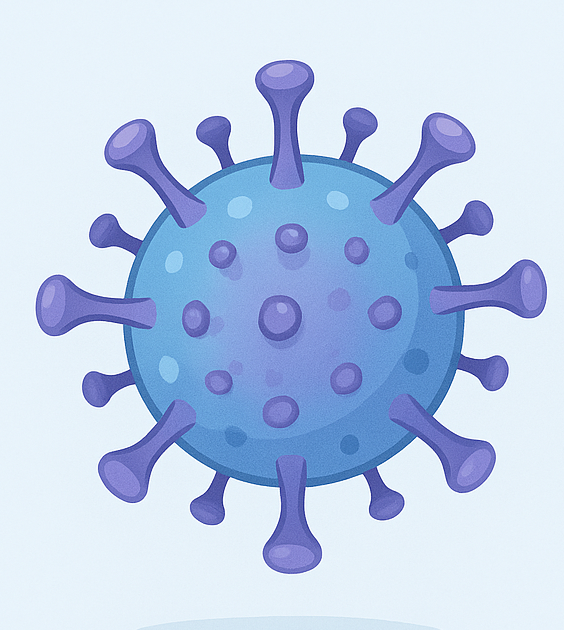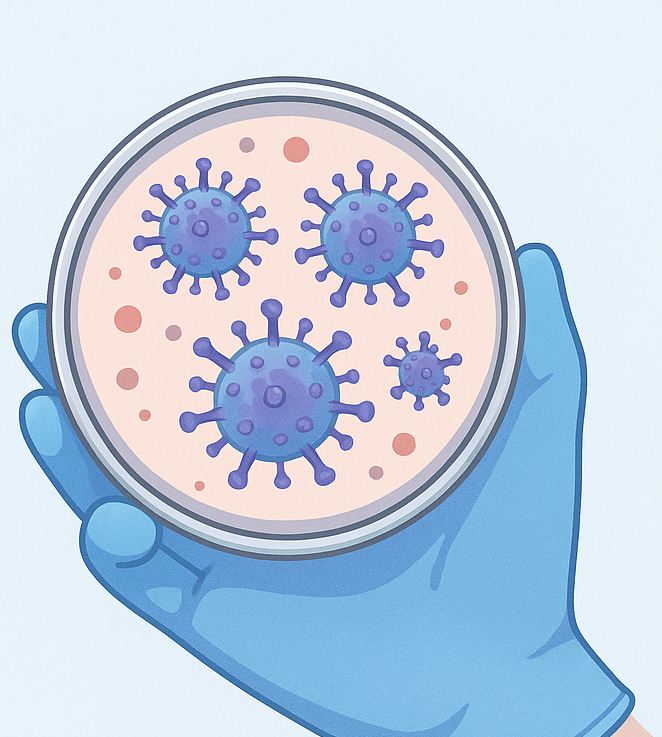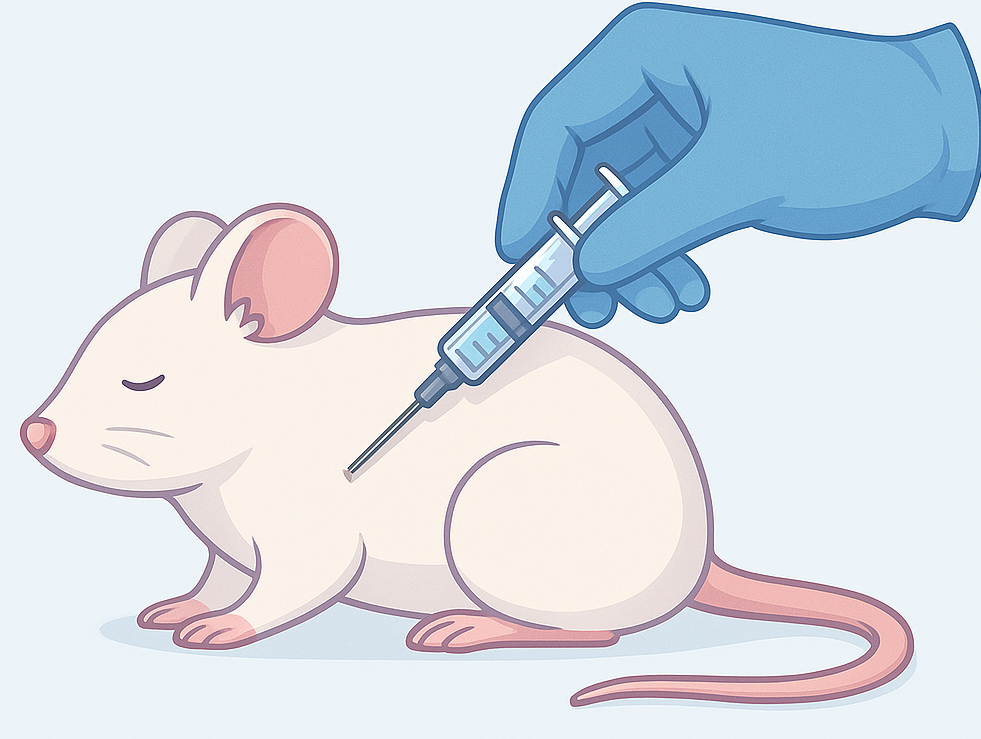What is virus?

Viruses are unique microorganisms that cannot grow or reproduce on their own. Unlike bacteria, they lack the cellular machinery needed for replication. Instead, viruses must invade living host cells and hijack their biological processes to multiply. Virus cultivation is the lab process of growing these microscopic invaders under controlled conditions, giving scientists the tools to study them, develop vaccines, and find ways to stop infections. This fundamental characteristic makes virus cultivation a specialized and essential technique in microbiology and medicine

Scientists cultivate viruses for several critical purposes:
- To study their structure and behavior
- To develop vaccines that prevent viral diseases
- To create accurate diagnostic tests
- To test the effectiveness of antiviral medications
Summary of Virus Cultivation
- Viruses need living cells (animals, eggs, or lab cultures) to replicate.
- Cultivating viruses enables vaccine development, disease research, and antiviral drug testing, helping combat infections like flu, polio, and COVID-19.
- Some viruses are hard to grow, may mutate in labs, and require high-security facilities to prevent contamination or accidental release.
Table of Contents
Methods of Cultivation of Virus
The process of growing viruses requires careful control and specific techniques. Over the years, three primary methods have emerged as the most effective ways to cultivate viruses in laboratory settings.
1. Animal Inoculation Method

The oldest technique for virus cultivation involves using live animals as hosts. In this method:
Researchers inject the virus into a susceptible animal, typically mice, rabbits, or monkeys. The virus then infects the animal’s cells and begins to replicate. After an incubation period, scientists can harvest the virus from the animal’s blood or organs for further study.
This method was crucial in early virology research. For example:
- Rabies virus was first studied by inoculating rabbits
- Poliovirus research initially used monkeys as hosts
However, animal inoculation has significant limitations:
- It raises ethical concerns about animal welfare
- The process is expensive to maintain
- Not all human viruses grow well in animal hosts
Because of these drawbacks, scientists have developed alternative methods that are more efficient and humane.
2. Cultivation of virus in embryonated eggs
A major advancement came with the use of fertilized chicken eggs for virus cultivation. This method offers several advantages over animal inoculation:
The egg provides a sterile, self-contained environment rich in nutrients. Researchers inject the virus into specific parts of the egg:
- The yolk sac for some bacterial and viral studies
- The amniotic cavity particularly effective for influenza viruses
- The chorioallantoic membrane which shows visible signs of infection
After injection, the eggs are incubated at body temperature (37°C) for several days. During this time, the virus multiplies within the developing embryo. Scientists then harvest the virus from the egg for further use.
This technique has been invaluable for:
- Producing influenza vaccines
- Studying mumps and yellow fever viruses
- Large-scale vaccine production
Despite its benefits, the egg method has some limitations:
- Some viruses (like HIV) don’t grow well in eggs
- There’s a risk of egg protein allergies in vaccines
- Not suitable for all types of viral research
3. Cell Culture Technology
The most advanced and widely used method today is cell culture, also called tissue culture. This technique involves growing viruses in human or animal cells maintained in laboratory conditions.
The process works as follows:
- Scientists prepare a culture of living cells in a special nutrient medium
- They introduce the virus to the cell culture
- The virus infects the cells and begins to replicate
- Researchers monitor cell changes that indicate viral growth
- Finally, they harvest the newly produced viruses
Three main types of cell culture
There are three main types of cell cultures used:
Primary Cell Cultures
- Taken directly from animal or human tissue
- Can only survive for a limited number of divisions
- Example: Monkey kidney cells used for polio research
Diploid Cell Strains
- Can undergo more divisions than primary cells
- Maintain their original genetic characteristics
- Example: Human lung cells used in rubella vaccine development
Continuous Cell Lines
- Can divide indefinitely
- Often derived from cancerous tissue
- Example: Famous HeLa cells used in numerous studies
Cell culture has revolutionized virology because:
- It’s more ethical than animal testing
- Allows precise control over experimental conditions
- Enables study of viruses that don’t grow in eggs or animals
Detecting Viral Growth
Scientists use several methods to confirm successful virus cultivation:
- Microscopic examination reveals cell damage or death
- Plaque assays show clear zones where viruses have destroyed cells
- Genetic tests (like PCR) detect viral DNA or RNA
- Hemagglutination tests identify viruses that clump red blood cells
Applications of Virus Cultivation
The ability to grow viruses has led to numerous medical advances:
Vaccine Development
Most viral vaccines are made using cultivated viruses:
- Flu vaccines from egg-grown viruses
- Polio vaccine from cell-cultured viruses
- Measles, mumps, and rubella (MMR) vaccines
Antiviral Drug Testing
New medications are tested against lab-grown viruses to:
- Determine effectiveness
- Identify proper dosages
- Discover potential side effects
Diagnostic Procedures
Cultured viruses help:
- Identify unknown infections
- Track disease outbreaks
- Develop accurate testing methods
Future Directions
Virus cultivation techniques continue to evolve:
- New cell culture methods are being developed
- Scientists are creating artificial cultivation systems
- Advances may allow cultivation of previously “uncultivable” viruses
Conclusion
The cultivation of viruses represents one of the most important techniques in modern medicine. From the early days of animal inoculation to today’s sophisticated cell culture methods, each advancement has brought us closer to understanding and controlling viral diseases. These techniques form the foundation for vaccine production, drug development, and disease diagnosis. As technology progresses, virus cultivation methods will undoubtedly become even more precise and effective, opening new possibilities in the fight against viral infections.
The ongoing refinement of these methods ensures that scientists will continue to make breakthroughs in virology, potentially leading to cures for diseases that currently have no effective treatments. The cultivation of viruses, though complex, remains an indispensable tool in protecting global health.
Frequently Asked Questions (FAQs)
How to Control Virus in Papaya Cultivation?
Controlling viruses in papaya requires preventive measures since infected plants can’t be cured. Farmers should start with certified virus-free seeds or plant resistant varieties (like the GMO Rainbow papaya, which fights Papaya Ringspot Virus). Infected plants must be removed and destroyed immediately to prevent spread, while insect vectors (especially aphids) should be controlled using insecticides or protective nets. Good field hygiene, like disinfecting tools and removing weeds, also helps reduce virus transmission.
What is Virus Cultivation?
Virus cultivation is the process of growing viruses in labs using living host systems (like animal cells, eggs, or cell cultures) because viruses can’t multiply on their own. Scientists do this to study viruses, make vaccines, or test treatments.
How do you cultivate virus?
To cultivate viruses, scientists use living systems where viruses can multiply since they can’t grow on their own. The three main methods include using live animals (like mice or monkeys, though this is now rare due to ethical concerns), fertilized chicken eggs (especially for growing flu viruses for vaccines), and human or animal cell cultures grown in lab dishes (the most common modern method for research and vaccine production). Each technique provides the necessary environment for viruses to infect cells and replicate, which can then be harvested for study or medical use.
Related Articles

